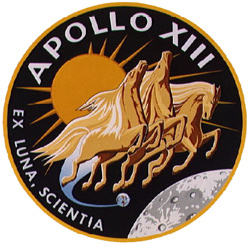News From Mark Shanda, USITT President
Problem-Solving Apollo 13-style
 One of my favorite films is Ron Howard’s Apollo 13. It resonates with me for a variety of reasons.
One of my favorite films is Ron Howard’s Apollo 13. It resonates with me for a variety of reasons.
President John F. Kennedy said, “I believe that this nation should commit itself to achieving this goal, before this decade is out, of landing a man on the moon and returning him safely to the earth,” launching the Apollo missions and becoming a significant part of my childhood. I read and watched everything I could about the space program growing up and will forever remember seeing the black and white images of Neil Armstrong stepping off the Lunar Excursion Module (LEM) ladder with that “one small step for man, one giant leap for mankind.”
My favorite scene in Apollo 13 occurs after the explosion in space, when the LEM is being used as a lifeboat to bring the three-member crew back to earth. The on-the-ground engineers must solve yet another life-threatening crisis as carbon dioxide levels increase at an alarming rate aboard the damaged spacecraft. Because the CO2 filters of the LEM and the Command Module are different (one was square and the other round), the engineers had to to make a square peg fit into a round hole.
The lead engineer tells his team, “Ok people, listen up. The people upstairs handed us this one, and we have got to come through. We’ve got to find a way to make this, fit in the hole for this, using nothing but that.” Then he throws out all items available to the crew in the capsule on a table, and they get to work.
The concept of the “people upstairs” handing us a challenge to meet with only a fixed amount of resources sounds an awfully lot like the production process we all regularly take on. Whether we are building a set for yet another production of Tennessee Williams’ The Glass Menagerie, setting up the outdoor staging for a jazz festival, lighting a grand opera, or costuming seven principal characters along with a chorus of 20, these production challenges at first may be daunting.
However, just like those engineers of the Apollo era, once we define our challenges and confirm the resources available, we roll up our sleeves, apply our greatest level of creativity, and get the job done.
Good luck with your next production and may you be just as successful as the triumphant return of the astronauts of Apollo 13. After all, what they did was actual rocket science.


We'd like to hear your comments on this story.
Please e-mail Mark at Shanda.1@osu.edu.